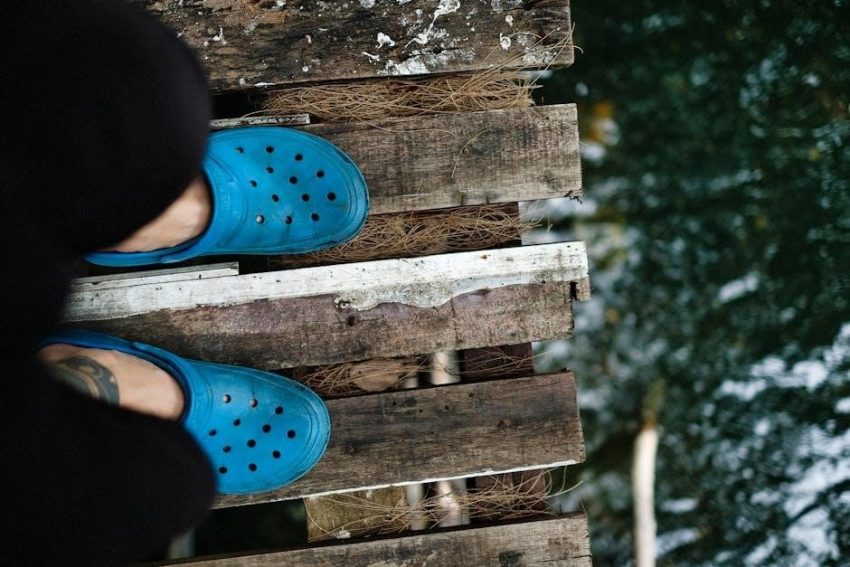Proper tattoo aftercare is crucial for healing and vibrant results. Keep it clean, use recommended products, and avoid harmful exposures to ensure optimal recovery and minimize risks.
Importance of Proper Tattoo Aftercare
Proper tattoo aftercare is essential for preventing infections, promoting healing, and ensuring the tattoo retains its vibrancy. Improper care can lead to scarring, fading, or prolonged recovery. Keeping the tattoo clean, avoiding harsh products, and following a consistent routine are critical. Neglecting aftercare can result in complications, such as delayed healing or irreversible damage. By adhering to guidelines, you protect your investment and maintain the health of your skin. Always prioritize hygiene and avoid excessive exposure to water or sunlight during the healing process for the best results.
Overview of the Healing Process
The healing process for a new tattoo typically occurs in stages. Initially, the tattoo may bleed or ooze ink, requiring frequent cleaning. Within the first 24-48 hours, it begins to form a protective barrier. Over the next few days, the tattoo may peel or scab, which is normal. By days 3-14, the skin starts to regenerate, and the tattoo begins to look more vibrant. Full healing usually takes 2-4 weeks, but the skin may remain sensitive for a few more weeks. Proper care during this period ensures a smooth recovery and optimal results.
Immediate Post-Tattoo Care
After getting a tattoo, keep it bandaged for 1-3 hours. Remove the bandage, wash with mild soap, pat dry, and apply ointment to promote healing and prevent infection.
Removing the Bandage
After 1-3 hours, gently remove the bandage to allow the tattoo to breathe. Wash your hands thoroughly before touching the tattoo. Use warm water and mild antibacterial soap to clean the area, ensuring all residue is removed. Pat dry with a clean, soft cloth or paper towel. Avoid rebandaging, as the tattoo needs airflow to heal properly. Keep the area clean to prevent infection and promote healing. Follow these steps carefully to ensure proper care and avoid complications.
First Wash: Steps and Products to Use
After removing the bandage, wash the tattoo with warm water and a mild antibacterial soap like Dial or Provon. Gently massage the area with clean hands to remove any blood, plasma, or residue. Avoid scrubbing or using harsh cloths. Rinse thoroughly and pat dry with a clean, soft cloth or paper towel. Repeat this process 3-4 times daily for the first three days. This step is essential for preventing infection and promoting a smooth healing process. Always use clean products and avoid harsh chemicals.
Daily Tattoo Care Routine
Wash the tattoo 2-3 times daily with mild soap and warm water. Gently pat dry and apply a thin layer of recommended ointment. Consistency is key for healing.
Washing the Tattoo: Frequency and Technique
Wash the tattoo 2-3 times daily using mild antibacterial soap and warm water. Gently massage with clean hands, avoiding scrubbing or harsh cloths. Rinse thoroughly and pat dry with a clean towel. Avoid soaking the tattoo in water during healing. Always use fragrance-free, hypoallergenic products to prevent irritation. Proper washing technique helps remove bacteria, blood, and plasma, promoting a smooth healing process without causing damage or scabbing.
Drying the Tattoo: Patting vs. Rubbing
Air-dry the tattoo briefly, then gently pat it dry with a clean, soft cloth or paper towel. Avoid rubbing, as it can irritate the skin and delay healing. Patting is gentler and reduces the risk of damaging the tattoo or causing scabs. Never rub the tattoo with excessive force, as this can dislodge ink or cause inflammation. Proper drying techniques are essential for maintaining the tattoo’s integrity and ensuring a smooth recovery process.
Applying Ointment or Aftercare Cream
After washing, apply a thin layer of ointment or aftercare cream to keep the tattoo moisturized. Use products like Aquaphor or H2Ocean, recommended for their healing properties. Gently rub the ointment into the skin until fully absorbed. Avoid excessive application, as it can suffocate the tattoo. Reapply 2-3 times daily or whenever the tattoo feels dry. Proper application promotes healing, prevents scabbing, and ensures vibrant ink retention. Always choose fragrance-free, non-comedogenic options to minimize irritation.
What to Avoid During Healing
Avoid submerging the tattoo in water, direct sun exposure, and scratching. Refrain from using harsh chemicals or tight clothing to prevent irritation and promote smooth healing.
Exposure to Water: Swimming and Bathing
Minimize water exposure during healing. Avoid swimming pools, hot tubs, and soaking baths for 2 weeks. Gentle showers are okay, but pat dry afterward. Avoid submerging the tattoo in water to prevent bacterial growth and delay healing. Keep water contact brief to protect the tattoo from infections and scarring. Proper drying is essential to maintain a healthy healing environment.
Direct Sun Exposure: Risks and Precautions
Avoid direct sun exposure for 2 weeks to prevent fading and blistering. Use SPF 30+ sunscreen and protective clothing once healed. Prolonged UV exposure can cause ink to fade and increase infection risks. Keep the tattoo shaded or covered when outdoors. Sunbeds should also be avoided during healing. Proper precautions ensure vibrant colors and a smooth recovery process.
Scratching or Picking at the Tattoo
Scratching or picking at the tattoo can lead to infection, scarring, and delayed healing. It may also remove ink, causing unevenness. Keep hands clean and avoid touching the tattoo unnecessarily. If itching occurs, apply a thin layer of recommended ointment or aftercare cream. Moisturize gently to soothe irritation. Scratching can dislodge scabs, disrupting the healing process. Resist the urge to pick at peeling skin, as this can damage the tattoo. Patience is key for a smooth, healthy recovery.

Recommended Aftercare Products
Use mild antibacterial soaps like Dial or Provon, and ointments such as Aquaphor or H2Ocean for proper healing. These products promote a clean, moist environment for tattoo recovery.
Mild Antibacterial Soaps: Safe Options
Mild antibacterial soaps like Dial or Provon are ideal for tattoo care. They gently cleanse without harsh chemicals, reducing the risk of irritation. Look for fragrance-free options to avoid allergic reactions. These soaps effectively remove bacteria, plasma, and excess ink without stripping the skin of its natural moisture. Gently massage the soap onto the tattoo with clean hands, rinse thoroughly with warm water, and pat dry. Avoid scrubbing, as this can damage the delicate skin. Using the right soap ensures a clean environment for healing and prevents infections.
Healing Ointments: Aquaphor and H2Ocean
Aquaphor and H2Ocean are top-recommended ointments for tattoo aftercare. Aquaphor heals and moisturizes the skin, promoting a protective barrier without clogging pores. Apply a thin layer after washing. H2Ocean, with natural ingredients, aids in healing and maintains vibrant colors. Both products are non-comedogenic and fragrance-free, reducing irritation risks. Use them as directed to keep the tattoo moist and promote optimal recovery. These ointments are essential for preventing dryness and scabbing, ensuring a smooth healing process.

Understanding the Healing Stages
Tattoo healing progresses through distinct stages: initial healing (first 24-48 hours), intermediate (days 3-14), and final (weeks 2-4). Each phase requires specific care for optimal results.
Initial Healing: First 24-48 Hours
The first 24-48 hours are critical. Remove the bandage after 1-3 hours, then gently wash the tattoo with mild antibacterial soap and warm water. Pat dry with a clean cloth. Avoid rebanding and keep the tattoo exposed to promote healing. Apply a thin layer of ointment like Aquaphor or H2Ocean. Avoid direct sun, soaking, or harsh products. Keep the area clean and moisturized to prevent scabbing and infection, ensuring a smooth transition to the next healing phase.
Intermediate Healing: Days 3-14
During days 3-14, the tattoo begins to peel and flake naturally. Reduce washing to twice daily, using mild soap and warm water. Gently pat dry with a clean cloth. Continue applying ointment to keep the area moist. Avoid picking at peeling skin to prevent scarring. Keep the tattoo away from direct sunlight and avoid swimming. Maintain hygiene and monitor for signs of infection. This phase is crucial for skin regeneration and color retention, ensuring the tattoo heals evenly and vibrantly.
Final Healing: Weeks 2-4
By weeks 2-4, peeling subsides, and the tattoo appears more vibrant. Continue moisturizing to support skin regeneration. Reduce ointment application to once daily or as needed. Avoid direct sun exposure to prevent fading. The tattoo may still feel sensitive, so gentle care is essential. Monitor for any complications and maintain hygiene. Full healing occurs around week 4, but some areas may take longer. Keep the tattoo moisturized to ensure optimal results and vibrant color retention. Proper care during this phase ensures a smooth, long-lasting finish.

Tips for Optimal Healing
- Keep it moist: Apply ointment regularly to prevent dryness and promote healing.
- Gentle touch: Avoid harsh products or scrubbing to protect the sensitive skin.
- Hydrate: Drink plenty of water to support skin health and recovery.
Keeping the Tattoo Moist
Maintaining proper moisture is essential for healing. Apply a thin layer of ointment like Aquaphor or H2Ocean 2-3 times daily to prevent dryness and scabbing. Gently rub it in until absorbed. Over-moisturizing can cause inflammation, while under-moisturizing leads to cracking. Avoid submerging the tattoo in water until fully healed. Use clean hands and avoid touching unnecessarily. Moisturizing promotes vibrant colors and smooth texture, ensuring your tattoo heals beautifully and lasts longer. Consistency is key to optimal recovery and maintaining its aesthetic appeal.
Maintaining Proper Hygiene
Proper hygiene is vital for tattoo healing. Always wash your hands with antibacterial soap before touching the tattoo. Use clean, gentle products to prevent infection. Avoid harsh chemicals or abrasive materials that can irritate the skin. Keep the tattoo away from pets and dirty environments. Regular cleansing with mild soap and warm water helps maintain a sterile environment. Avoid sharing aftercare products to reduce contamination risks. Proper hygiene practices ensure a smooth recovery and prevent complications, promoting healthy skin and vibrant ink retention.
Common Mistakes to Avoid
Common mistakes include over-washing, using harsh products, and touching without clean hands. Avoid soaking the tattoo and never scrub. These errors can delay healing or cause damage.
Over-Washing the Tattoo
Over-washing can strip the tattoo of its natural oils, leading to dryness and delayed healing. Limit washing to twice daily with mild soap, avoiding harsh scrubbing. Excessive water exposure can cause irritation or scabbing, which may result in fading or uneven healing. Pat dry gently with a clean cloth instead of rubbing vigorously. Maintaining a balance is key to preserving the tattoo’s integrity and promoting a smooth recovery process without compromising its aesthetic quality or longevity.
Using Harsh Chemicals
Using harsh chemicals on a new tattoo can cause irritation, dryness, and delayed healing. Avoid products containing alcohol, astringents, or fragrances, as they can strip the tattoo of its natural moisture. Stick to mild, fragrance-free soaps and ointments specifically designed for tattoo aftercare. Harsh chemicals may lead to scabbing, fading, or even infections, compromising the tattoo’s appearance. Always opt for gentle, antibacterial cleansers like Dial or Provon, and avoid abrasive scrubbing. Protecting the tattoo from harmful products ensures a smoother and healthier healing process;

When to Seek Professional Advice
Consult a professional if you notice signs of infection, delayed healing, or scarring. Seek immediate advice from your tattoo artist or a healthcare provider for proper guidance.
Signs of Infection
If your tattoo shows signs of infection, such as increased redness, swelling, pain, pus, or fever, seek immediate medical attention. These symptoms indicate potential complications that require professional care to prevent further issues and ensure proper healing. Always consult a healthcare provider if you notice any unusual reactions or prolonged discomfort. Early intervention is key to resolving infections and safeguarding your tattoo’s health.
Delayed Healing or Scarring
Delayed healing or scarring can occur if aftercare instructions aren’t followed properly. Signs include persistent redness, blisters, or uneven skin texture. Scarring may result from picking at scabs or over-washing. If healing slows or scars form, consult your tattoo artist or a medical professional for advice. Proper care and avoiding irritants can help minimize scarring and promote smoother recovery. Addressing issues early ensures your tattoo heals well and maintains its intended appearance. Regular monitoring and adherence to aftercare routines are essential.
Proper tattoo aftercare ensures vibrant results and prevents complications. Follow instructions diligently, keep the tattoo clean, and seek professional advice if issues arise for optimal healing and longevity.
Final Thoughts on Tattoo Aftercare
Consistent and proper aftercare is vital for your tattoo’s health and appearance. Avoid harsh products, keep the area clean, and protect it from direct sun exposure. Patience is key, as healing takes time. If you notice any signs of delayed healing or infection, consult your tattoo artist or a healthcare professional immediately. Remember, proper care ensures a vibrant and long-lasting result. Follow the guide diligently, and your tattoo will reward you with stunning visuals for years to come. Make the effort worthwhile by prioritizing its health and maintenance.
Printable Tattoo Aftercare Checklist
A printable checklist ensures you never miss a step in your tattoo care routine. Start with removing the bandage after 1-3 hours and washing with mild soap. Pat dry gently, avoiding rubbing. Apply a thin layer of recommended ointment like Aquaphor or H2Ocean. Wash the tattoo 2-3 times daily and keep it moisturized. Avoid direct sun, swimming, and harsh products. Monitor for signs of infection, such as redness or swelling. Seek professional advice if healing is delayed. Follow these steps diligently for optimal results and a vibrant tattoo.
